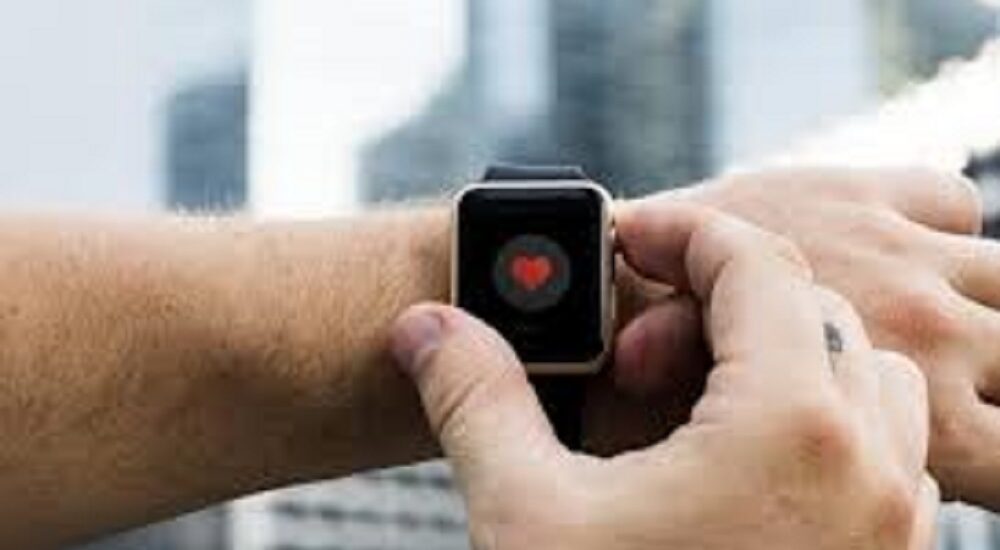Understanding how to check Apple Watch heart rate is important in bringing out the full potential of your Apple Watch, a tool designed to keep you informed about your health. This detailed step-by-step guide is crafted to aid users at all levels in navigating this essential feature with confidence and ease. Whether you’re monitoring your heart rate during a workout or keeping an eye on your daily health metrics, this guide will ensure that you can do so with precision.

Table of Contents
Step-by-step Guide on How to Check Apple Watch Heart Rate
Ensuring Your Watch is Ready
Before diving into how to check Apple Watch heart rate, it is indispensable to have your watch prepared . Following the guidelines on the official Apple Watch setup guide will help in setting up your watch correctly. The watch should be snug but comfortable on your wrist, ensuring a proper fit to facilitate accurate heart rate readings.
Click here for more articles like this one – How To Fix Apple Watch Issues: A Comprehensive Guide
Accessing the Heart Rate App
To proficiently understand how to check Apple Watch heart rate, start by locating and launching the heart rate app on your Apple Watch. The app, identified with a heart icon, is designed for user-friendly navigation.
Checking Your Heart Rate
In the journey of mastering how to check Apple Watch heart rate, you will appreciate the simplicity of the app interface that provides your current heart rate prominently displayed. Alongside, find metrics such as your resting rate and walking average for the past few hours. For a detailed interpretation of what these numbers signify, refer to the comprehensive guidelines on the Apple Support page.
Setting Up Heart Rate Notifications
One of the standout features when learning how to check Apple Watch heart rate is setting up notifications to monitor your heart’s activity actively. This step is not only vital but also empowers you to take charge of your health proactively. Being notified about significant fluctuations in your heart rate allows for timely interventions, promoting overall wellbeing.
To set up heart rate notifications, initiate by opening the ‘Apple Watch’ app on your paired iPhone. Navigate to the ‘My Watch’ tab and select the ‘Heart’ option. This section presents a range of settings that allow you to customize how you receive heart rate data.
Under ‘Heart Rate Notifications,’ you will find options to set notifications for high and low heart rate thresholds. Apple provides a recommended range, but you have the liberty to define these thresholds based on your personal health goals and medical advice.
Aside from defining thresholds, you can also explore the ‘Heart Health’ section to access features like irregular rhythm notifications, which can alert you to signs of atrial fibrillation (AFib), a serious form of irregular heart rhythm. It is important to note that this feature might not be available in all regions or for users below 22 years of age.
Additionally, ensure that you are wearing your watch correctly — not too tight or too loose — to get accurate readings. Proper placement ensures that the watch can record precise data, forming the basis for reliable notifications.
Setting up your Apple Watch to deliver insightful heart rate notifications is a significant step towards a health-conscious lifestyle.
Troubleshooting Common Issues
Inconsistent Readings
As you learn how to check Apple Watch heart rate, encountering inconsistent readings might occur. To prevent this, ensure that the back of your watch is clean and that it maintains firm contact with your wrist.
Notification Issues
During the process of understanding how to check Apple Watch heart rate, you may come across certain hurdles with notifications. Sometimes, notifications may not appear as they should, leaving you unaware of critical heart rate data. This could be due to a variety of reasons including settings not being configured correctly, the watch not having sufficient charge, or issues with the latest update installed on your Apple Watch.
Firstly, ensure that the wrist detection feature is enabled as notifications are closely tied to this functionality. You can verify this by going to the Settings app on your Apple Watch, then tapping Passcode and ensuring that Wrist Detection is turned on.
Next, it is pivotal to confirm that heart rate notifications are enabled. To do this, open the Apple Watch app on your iPhone, tap ‘My Watch’, choose ‘Heart’, and check your settings under ‘Heart Rate Notifications’. Here, you can set the thresholds for receiving high or low heart rate notifications, helping you to remain informed and proactive about any unusual patterns in your heart rate data.
If these settings are correctly configured and you are still facing issues, it might be a good idea to restart your watch. Sometimes, a simple reboot can solve many technical glitches.
Lastly, ensure that your Apple Watch is updated to the latest software version to leverage all the available features seamlessly. Updates often contain bug fixes and improvements that can resolve existing issues.
Conclusion
Acquiring the skill of how to check Apple Watch heart rate allows you to utilize your Apple Watch to foster a healthier lifestyle actively. Regular monitoring becomes a simple yet powerful routine, keeping you attuned to your heart’s wellbeing. Remember, consistency is key to leveraging the full potential of this feature in your wellness journey.
